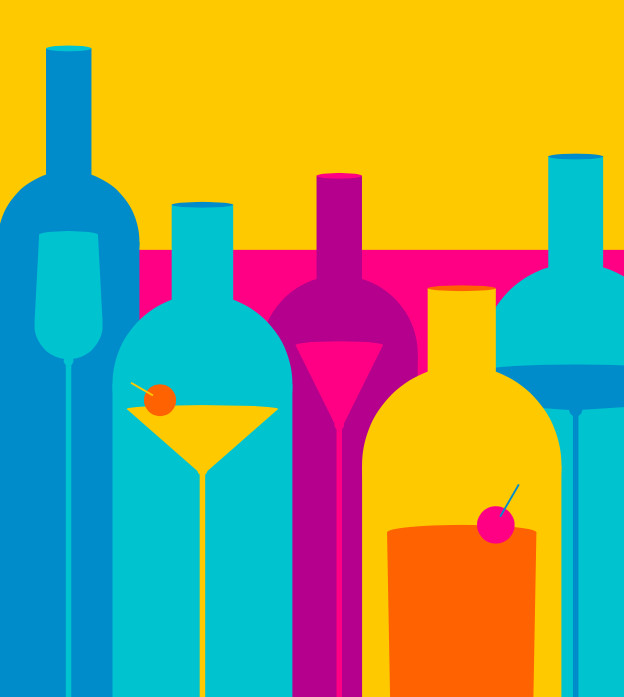
Nathan Larkin of Manchester’s Speak in Code in is an advocate of batched cocktails, but less as a drinks-making ideology, more a facilitator of the guest experience.
This – you may be slightly disappointed to read– is not an attack on cocktails made traditionally, à la minute. Nor is it a staunch defence of batched cocktails – or at least, not as the only means of making drinks.
I believe – as I’m sure many proponents of a traditional approach also do - that classic and modern schools of thought can exist at the same time. At SiC, we once made everything from scratch – our team is founded in classic bartender techniques. As we grew, we evolved to batching base spirits drinks that were stirred to order and eventually we moved to a broader batching-based model, which has seen a 20% increase in cover count. But even now, not everything in the bar is 100% batched. When working with ingredients such as fresh citrus, we batch the elements we can, always with the aim of reducing the number of pours.
No matter what your approach, I’m a big believer in training all bartenders in classical techniques. Even if your bar doesn’t serve a Sidecar or a Ramos Gin Fizz, an understanding of fundamentals builds confidence and the language around drinks making. We favour batching menu drinks because (when done well) it brings consistency and speed of delivery to our product. But not only that, perhaps most importantly, it frees up the team. That means more time and focus on personalised service, more care over the ambience and ultimately the holistic bar experience. It means less heads down, more eyes up bartending.
Much like in kitchens, where there are a variety of prep approaches, traversing traditional and modern techniques, one approach doesn’t negate the other and it needn’t be an absolutist thing either – a blend of both can work.
The changing expectation
The idea that batching is somehow the lesser form of bartending seems to partly stem from a nostalgic attachment to the visual theatre of cocktail making, and the facility to allow guests freedom of choice around how they drink. Viewed through the lens of what a traditional cocktail bar should be, it’s a valid point. Personalisation of drinks is a real luxury and fundamental to some consumers. But not all, and possibly not even most. In my experience, modern trends are headed in a different direction.
Many of today’s guests arrive with a new set of expectations. Awards, lists and social media have reframed what people look for in a great bar experience, leading to a rise in curated, concept-driven venues, where the guest journey is shaped by narrative, design and experience as much as the drinks themselves. For many bars, the goal is innovation, identity and delivering a consistent guest experience.
In our experience, a lot of our younger guests don’t prioritise flavour, temperature, or technique – they want a photo, a vibe, a moment. That’s not a criticism of the fundamentals of drinks making; it’s the recognition of a shift in how they’re received. And bars need to decide how they respond. Do you try to cater to everyone? Or do you focus your energy on doing what you do best, and doing it quickly and efficiently?
In a sense, this evolution in guest behaviour is a validation of our industry, a nod to how far we’ve come. The faith is put in the product, the trust in the bartender or bar who developed the drink – much in the same way that people behave in high-end restaurants. But equally, bars need to be careful not to get caught up in a creative spiral and lose sight of who a bar is for – a guest should never suffer for your creativity. If your only Negroni is a Miso Negroni, then maybe you need to check yourself. Creativity needs regulating.
Interestingly, we find that the more time we spend with guests – with menu walk-throughs and personal, interactive service – the more we involve our guests in our approach and the less desire there is for freedom around spirit choices in their drinks. Perhaps we do lose some of the performance of drinks being assembled in the traditional way (though we still shake drinks), but theatre comes in many forms. In many standards too – you may end up being less West End and more amateur production. Ultimately, choose your path and do it well.
A lack of training is deskilling our workforce
To spin this zeitgeist topic slightly on its axis, I would like to reframe what skill means in modern bartending. Drinks creation is a skill – either the ability to make drinks from scratch, quickly and accurately in a busy bar, or the precision, organisation and knowhow of batching. But so is the speed, effectiveness and warmth of service, your organisation and the management of guests, team and the bar’s ambience. They should all be honed.
Have you ever asked yourself, how much of your training is done on hosting vs drinks making? Can your team calmly manage a multi-faceted floor role when you’re at capacity? Can you maintain a clean space while tending to guests on your bar seats and knocking out perfectly executed drinks during a rush?
And if there’s a crisis in bar talent, it’s more likely due to a lack of structured training, staff development, mentorship and sustainable working conditions, rather than whether we make the drinks before or during service.
So my pitch to operators is to embrace (elements of, or full-scale) batching not as a shortcut but a tool. Batching represents an opportunity to fine tune every other aspect of your delivery. It allows you to focus on developing your team’s wider skills, because to me, it is a lack of effective training in our bars that is deskilling our workforce.
Once you focus on the guest journey – how we greet, seat, explain, pour and execute – the result is a better bar experience.


